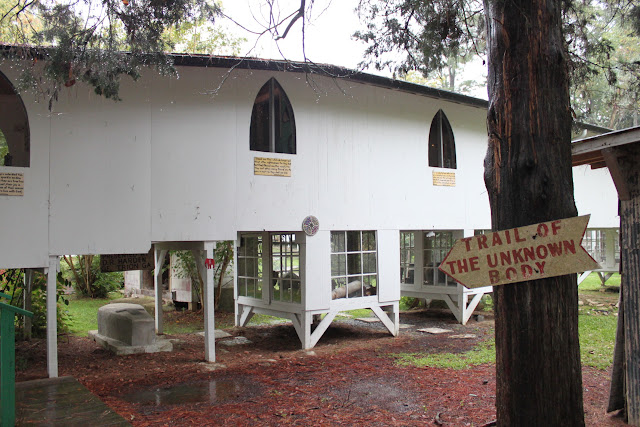
It was a rainy day in north Georgia. I’d gone to meet up with my grandparents and take them to the former home of a folk artist. We arrived at the prison and knew we’d gotten turned around. But when we doubled back, I immediately recognized it: a simple house in a simple neighborhood, but this one was covered in murals, mosaics and found objects. We’d found Paradise Garden, the home of Howard Finster, a sixth-grade dropout, a preacher who had visions, and a world-renowned folk artist.


We paid for admission into the house and walked around the path to the main part of the gardens. The garden cat cozied up to us, unafraid of visitors. My grandfather remarked how he could make these things, what people call “art.” I laughed to myself, as this is the sentiment behind the Dada movement.
But what made Howard Finster so unique, what led him to have his work showcased in New York galleries, to become a Kentucky colonel, to be featured on an album cover for R.E.M., was the fact that he was self-taught and used primarily objects found around his house.


He moved to this property in Pennville, outside the equally small town of Summerville, Georgia, in 1961. It started as a plant museum but slowly morphed into Finster’s interpretation of the Garden of Eden. The gardens and his home served as a roadside attraction for visitors for many years, even after his 2001 death.
Friends and family looked after the property, but it soon fell into disrepair until it was purchased by Chattooga County in 2012. Thanks to grants and placement on the National Register of Historic Places, it’s been brought back to life, adding in a visitor’s center, which plays a documentary on Finster, and a full-time staff.


He painted Elvis Presley, George Washington and a number of biblical scenes. Four paintings are in the Library of Congress. Paradise Garden appeared in Esquire magazine and his work was displayed at the Venice Biennale. But seeing the garden firsthand is very different than seeing it in photographs.
It’s the chapel, it’s the sidewalk with objects placed inside the cement, it’s the pile of scrap metal that is actually pieces of bicycles thoughtfully welded together. There’s a gallery of fellow folk artists and the body of a young woman who died over 100 years before Finster moved to Pennville.
He decided to make her a suitable tomb in the garden. He was a collector of objects and while to some it may look like junk, they were carefully curated and sorted: one section for bicycle handlebars, one section for lamps, one section for tires.


Howard Finster is an artist I studied in school, admired on visits to local art museums and finally learned the most about at his colorful residence. I highly recommend taking a road trip for yourself.
Paradise Garden is located about two hours from Atlanta. They’re open seasonally Thursday to Saturday from 12 to 4 pm and Sunday from 1 to 4 pm. Entry is $5 for adults, but I recommend purchasing the guide as it provides background knowledge on each section of the garden.
My photo from my visit to Paradise Garden landed me on the Lonely Planet blog! If you don’t already, follow me on Instagram for almost real-time updates on where I am.
Leave a Reply